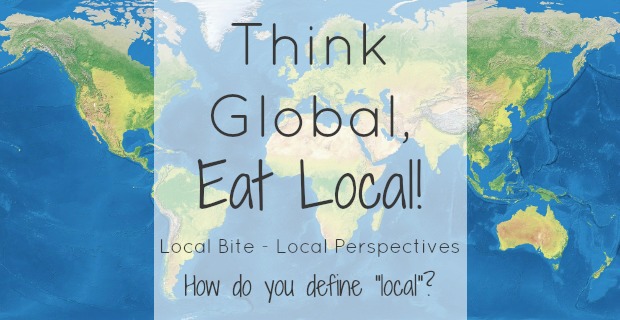I am incredibly proud to introduce you all to Kris at Attainable Sustainable this week as our Local Perspective! Kris has been such an inspiration to me as she continues on her own journey towards a more self-sufficient lifestyle through small steps and continued intention. Her posts offer great ideas with actionable steps (like How to Grow Food in a Drought and 12 Fail-Proof Food Crops for Beginners). In addition, she has worked with several other writers to create an amazing book called Off the Shelf, which allows you to replace your favorite supermarket “cheats” with simple homemade alternatives. Pure magic!
If you are not already familiar with Kris and all her site has to offer, I highly recommend spending some time on her blog. Trust me, it’s one of my favorite places to be 🙂 For now, though, I hope you’ll enjoy her Local Perspective, from beautiful Hawaii!
*****

About 85-90% of Hawaii’s food is imported.
That is a mind-boggling stat, and yet it doesn’t tell the whole story. Perhaps a bigger issue is why that much of our food is imported. While avocados and liliko‘i and citrus drop and rot on the ground, barges ply the waters bringing us grapes and apples and yes, even avocados from California. Ranchers on the island raise grass-fed cattle, ship it off island, and then we import battery-raised beef from somewhere else and strap it to Styrofoam for sale.
The disconnect between the people and the food, and the state of our food system is mind-boggling.
I live on the Island of Hawaii. Also known as the Big Island, this piece of land in the middle of the Pacific has the potential to be the breadbasket (or perhaps more accurately, the breadfruit basket) of the state. And we’re working on it. But it’s slow going.

Trouble in Paradise?
There are reportedly 100 egg farms in the state, but I suspect this number includes small scale, backyard farmers. As far as I know, there’s no commercial egg farm on this island. Eggs available at the supermarket are all brought in from the mainland except for one brand that comes from Oahu. [source]
There are currently only two dairies in operation in the entire state; neither are GMO-free. [source]
We do have a couple of small-scale goat dairies that produce goat cheeses that are available at our farmers markets, and of course lots of eggs from backyard farmers. Local options aren’t always feasible for people on a budget, though. These “gourmet” products come at a premium. And then there’s the issue of habit and desire: Consumers want their fast food, their processed food, their conveniences. It’s easier to grab a jug of O.J. at the store than to harvest and juice the crop in the backyard.

The good news.
There is a lot of food produced here and we’re capable of producing more. Avocados are in season for a good part of the year, citrus is plentiful, and tropical fruits like lychee, rambutan, bananas, and pineapple round out our options. Small-scale farms grow vegetables like beets, carrots, lettuce, kale, tomatoes, onions, squash, and eggplant. We even have a local mushroom producer. Grass-fed beef is raised on the island, we have a local hog farm, and several small farmers have begun offering fresh chicken – some is even GMO-free. And of course, we have our coffee.

So what is local when you live on an island?
When I’m looking for locally produced food, my first preference is something that was produced here on this island, but if I have to, I’ll stretch to products created in the state. The trouble is, even if it’s available locally, it’s not always budget-friendly. Balancing our desire for supporting local farmers and eating local with our bank account often leaves us frustrated.
Ideally, I’d be producing much of my own food, but I’m still working out just how to do that on our 1/3-acre lot. Our property is steep, sunshine is limited, and the soil is puny. Still, we grow some. Our bananas and avocados are prolific. Our neighbor scolds us to help ourselves to his abundant tangerines. The wild macadamia nut trees drop nuts for us to harvest. And I’m growing a small garden, continually trying to figure out how to improve yields. Eggplants and peppers do fairly well here, as do greens, beets, and carrots. Tomatoes and zucchini (yes, zucchini) are a struggle.
Our six hens keep us in eggs (most of the time) and I’ve got a small tilapia pond, though the system and our harvesting of the fish is a little bit hit or miss.
While the tropical produce is wonderful and abundant, I do really miss having access to stone fruits and apples.
90/10 – Mostly
If I had to put a number to it, I’d say that 90% of the produce and meat that we eat is sourced locally. The difficulty comes with items like bread and tortillas. Even if we make our own (which is our tendency), the flour needed for those recipes is imported. We simply have no grain options in the state. We do have sources for starchy foods in our taro or kalo, sweet potatoes, and breadfruit, but again, it’s a matter of breaking habits.
And that, to me, is what this local bites challenge will do for a lot of us – help us break habits, stretch our menus, and try new recipes.
 Kris Bordessa is the author of several books and a freelance writer. She spends much of her time wrangling chickens and beating back the jungle. In her spare time, she writes at Attainable Sustainable. You can follow her on Facebook, Pinterest, or Google +.
Kris Bordessa is the author of several books and a freelance writer. She spends much of her time wrangling chickens and beating back the jungle. In her spare time, she writes at Attainable Sustainable. You can follow her on Facebook, Pinterest, or Google +.

